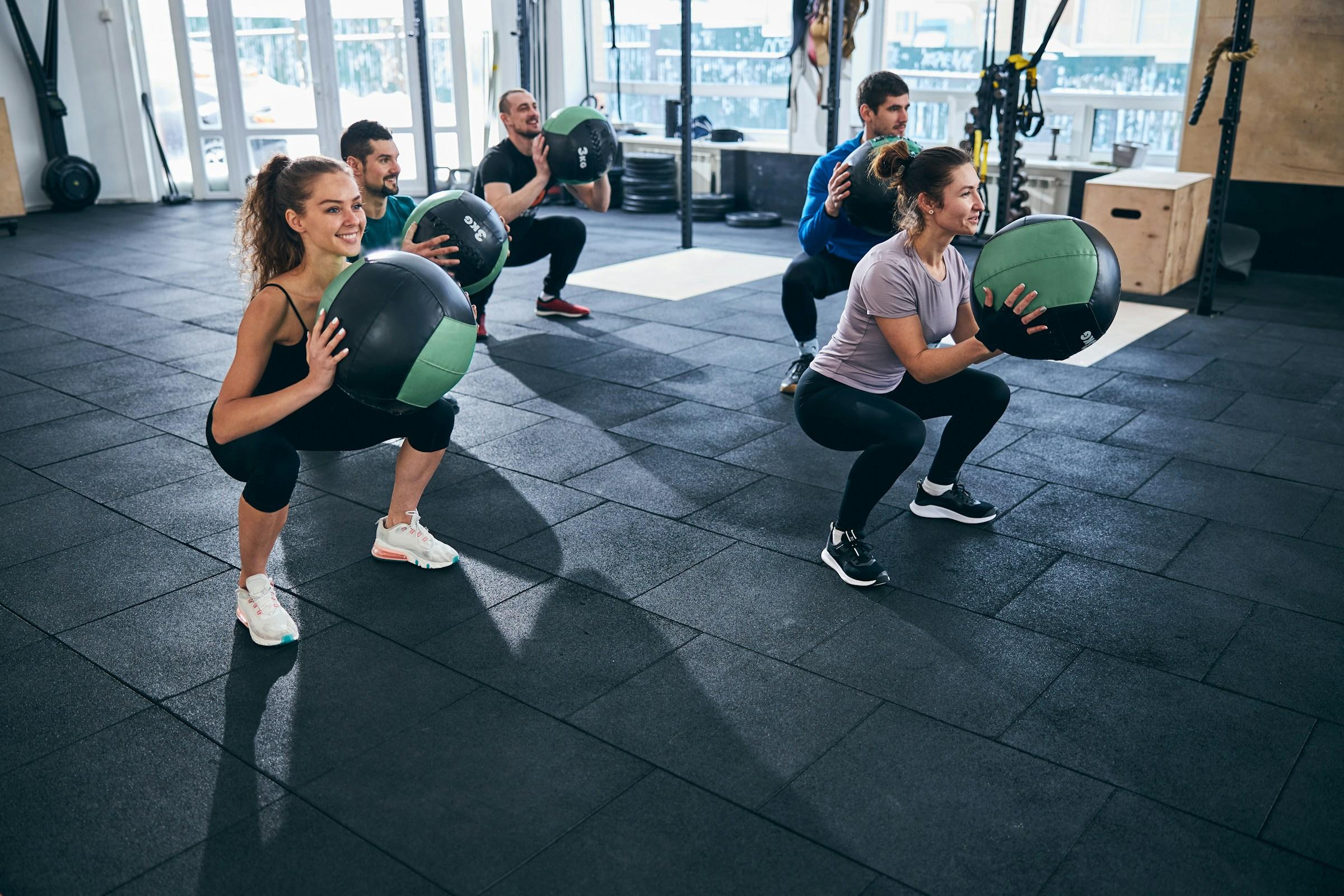Thrusters look simple. You squat down, you stand up, you press the weight overhead. In reality they are a full body stress test that demands legs, core, shoulders, and lungs to work at the same time. That is why they show up in CrossFit style workouts. It is also why most people either avoid them or abuse them. You do not integrate thrusters into your weekly workout plan by throwing them in wherever you feel guilty about not working hard enough. You treat them like a high impact tool in a larger operating system.
The starting point is to decide what job thrusters will perform in your week. They can be a strength builder when done heavier with lower reps. They can be a conditioning tool when done lighter for longer sets or time. They can be a test that you run every few weeks to see if your overall engine has improved. Pick one primary job for the next block of training. When everything is a priority, nothing is.
If your main goal is strength, thrusters belong near the front of your session on two days per week. Think about using them on full body days where you are already squatting and pressing. In that context you could run sets of three to six reps with a load that feels heavy but controlled, resting two to three minutes between sets. The load should allow perfect form, full depth, and a strong lockout overhead. You are training your legs and shoulders to move a serious load with coordination. The conditioning bump is a bonus, not the main focus. On those days you keep the rest of your training more stable. Pulling work, core work, and maybe a shorter finisher that does not involve more pressing will pair well.
If your main goal is conditioning, thrusters shift into a different role. Instead of three to six heavy reps, you use lighter weight and treat them like intervals. You can think in time blocks. For example you might perform thirty seconds of thrusters, ninety seconds of rest, then repeat for six to eight rounds. Or you plug them into simple couplets such as thrusters plus rowing, or thrusters plus body weight pull movements. In this setup, form and breathing control matter more than load. The right weight is the one you can cycle for ten to fifteen unbroken reps without your technique melting down. The conditioning approach works well one to two times per week, never on back to back days.
Your weekly structure should respect recovery. Thrusters are demanding on your quads, glutes, shoulders, and nervous system. That means they should not sit next to your heaviest squat day, your hardest overhead press day, and your longest conditioning day in the same twenty four hour window. A simple three day template could look like this. Day one is strength biased with heavy thrusters early in the session, supported by pulling and core work. Day two is lower intensity with walking, easy cycling, mobility, and maybe some isolated accessory work. Day three is conditioning biased with lighter thrusters inside intervals. You can repeat that three day cycle across the week based on your schedule, but you preserve at least one low stress day between heavy thruster sessions.
If you already run a four day upper lower split, thrusters can live at the junction between systems. On one lower body day you use front squats or back squats as the primary lift, then finish with three to four sets of moderate weight thrusters in the six to eight rep range. On one upper body day you keep pure pressing variations and pull work, and skip thrusters entirely. Then once per week, on a separate conditioning day, you bring thrusters back as a MetCon style piece with light loads. The rule is simple. No more than two serious thruster days per week. One strength bias, one conditioning bias. If you push volume hard, keep it to one focused day and treat the other appearance as a very short finisher with low total reps.
Progression matters more than creativity. To integrate thrusters into your weekly workout plan in a sustainable way, you should be able to answer one question each week. How did I make this slightly harder or slightly more precise than last week. That can mean adding a small amount of weight to your strength sets. It can mean adding one set of intervals while keeping the same load. It can mean keeping everything the same and just moving with cleaner form and smoother breathing. What you do not need is a different thruster variation every session. You can run the same pattern for four to six weeks before changing anything significant.
Technique is the limiter that protects your knees, hips, and shoulders. The squat and the press are not separate in a thruster. They are one continuous movement. You receive the weight in a strong front rack position, sit into a controlled squat with heels down and chest up, drive hard through your legs, and only then let that force transfer into your press overhead. If your elbows drop, your knees cave in, or your heels leave the ground, the load is too heavy or your fatigue is too high. Part of integrating thrusters into your week is having the discipline to cut sets short when form breaks. You are building a system for longevity, not chasing one viral workout.
You also need to match the tool to your current level. Beginners do well with dumbbell thrusters because the range of motion is more forgiving and the load can be adjusted in smaller jumps. Two days per week of three sets of eight to ten reps with light dumbbells can be enough when you are still learning the pattern. Intermediates can shift to a barbell, add more sets in the three to six rep range for strength, and experiment with short conditioning pieces that last five to eight minutes. Advanced lifters with solid mobility and a large training base can push density and intensity more, but even then the cap on hard thruster work is usually twenty to thirty total challenging reps in a session. Past that point the cost rises faster than the benefit.
The rest of your training should support what thrusters are doing, not compete with them. If thrusters are your main squat and press pattern on a given day, your accessory work can emphasize pulling strength, hamstring work, and core stability. Think rows, deadlifts or hip hinges, and planks. If thrusters are in a conditioning block, keep your strength work simpler and more joint friendly that day. Heavy singles or grinding sets to failure on pressing movements will only make your thrusters worse and your joints more irritated. You want contrast. Heavy but clean strength work on some days. Faster mixed work on others. True recovery or low intensity movement somewhere in between.
Recovery habits are part of the plan, not an afterthought. Thrusters spike heart rate and breathing quickly. They also load the front of the body heavily. After those sessions, prioritize gentle walking, easy cycling, and simple mobility around the hips, ankles, and thoracic spine. Get enough protein and carbohydrates so your body can actually adapt. Sleep is the real performance enhancer. If your sleep is disrupted or your stress outside the gym is high, dial back thruster volume for that week. Keeping the pattern alive at lower intensity is better than pushing hard and needing a full reset because you overreached.
You can also use thrusters as a recurring benchmark. Pick one simple test workout that uses them and repeat it every six to eight weeks to see if your weekly structure is working. It might be three rounds of a moderate number of thrusters plus a fixed distance row. It might be a five minute continuous set at a certain load where you count total reps. When you repeat the test, change nothing about the format. If your reps go up, or your time goes down, you know that your integrated plan is building capacity. If performance stalls while fatigue climbs, you know you have pushed the tool too hard and need to adjust frequency or load.
In the end, thrusters belong inside a system that respects intensity, skill, and recovery. They are too effective to be random and too costly to be casual. Set a clear role for them in your week. Limit hard sessions. Progress slowly. Protect form. Align your other training and your recovery so the movement can do its job without draining everything else. If your thruster plan still works on your busiest, most stressful weeks, then you have designed a protocol that can actually support long term performance. If it collapses whenever life gets messy, the problem is not the movement. It is the system around it.














